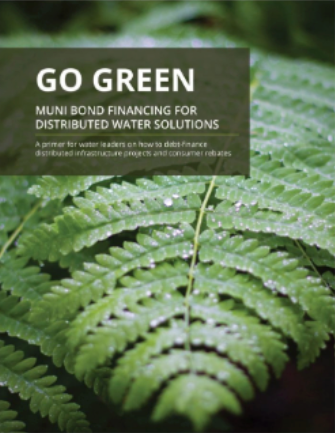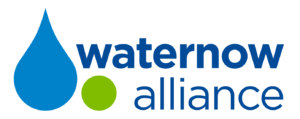Drought Preparedness & Response
 Drought Preparedness & Response
Drought Preparedness & Response
This American Water Works Association manual illustrates how managers facing water shortages can employ well-established, proven strategies and tactics of drought mitigation, as well as introduces new tools and methods. The how-to guide sets out a 7 step process to respond to drought related water shortages.
To access this valuable manual click the link below.
Water Conservation Planning Manual
 Water Conservation Programs, A Planning Manual
Water Conservation Programs, A Planning Manual
This American Water Works Association manual provides water utilities and other industry professionals guidance on developing, implementing, and measuring the success of a water conservation program. Chapter 4, in particular, details how to evaluate the benefits and costs of conservation programs including an overview to benefit-cost analysis methodology and details on typical benefits, calculating water savings, and determining benefits.
To access this valuable manual click the link below.
Conservation Program Operation & Management
 Water Conservation Program Operation and Management
Water Conservation Program Operation and Management
This American Water Works Association manual details critical elements of establishing, implementing, and evaluating an effective water conservation program. "It encompasses utility activities to improve water use on the supply side through distribution system management and on the demand side through customer billing and education practices."
To access this valuable manual click the link below.
AWWA Standard and Operation Guide Set
 AWWA Standard and Operation Guide Set
AWWA Standard and Operation Guide Set
This American Water Works Association set includes two key manuals on essential requirements for an effective utility management system: (1) Utility Management System and (2) Operational Guide to AWWA Standard. Together these guides provide information to water utilities for implementing critical requirements for water utility management set out in AWWA Standard G400. "Standard G400 was created to respond to a widespread need of utility managers to have some consistency in approach and some reliability in knowing what is generally expected of utilities in all areas of utility management."
To access the guides click the link below.
Developing Rates for Small Systems
 Developing Rates for Small Systems
Developing Rates for Small Systems
This American Water Works Association manual provides best practices for setting rates, fees, and charges, especially for water utilities serving a population of up to 10,000. The manual covers basics of rate setting, customer account and usage data, how to prepare a financial plan and evaluating revenue sufficiency, rate design concepts, objectives and adoption, and provides example alternative cash flow plans as well as financial policies.
To access this valuable AWWA manual click the link below.
Principles of Water Rates, Fees and Charges
 This official American Water Works Association Manual of Water Supply Practices will help water policymakers, utility managers, and rate analysts consider all relevant factors. The updated 7th Edition features significant changes, including updated information on treatment of fixed charges and declining revenue and the growing issue of affordability. This addition also includes new chapters on water reuse and emerging trends.
This official American Water Works Association Manual of Water Supply Practices will help water policymakers, utility managers, and rate analysts consider all relevant factors. The updated 7th Edition features significant changes, including updated information on treatment of fixed charges and declining revenue and the growing issue of affordability. This addition also includes new chapters on water reuse and emerging trends.
"Water rates developed using the methodologies discussed in this manual, when appropriately applied, are generally considered to be fair and equitable because these rate-setting methodologies result in cost-based rates that generate revenue from each class of customer in proportion to the cost to serve each class of customer." Objectives in establishing cost-based rates include recovery of the full revenue requirement in a fair and equitable manner as well as incentivizing efficient resource use, i.e., conservation and efficient use and revenue and rate stability.
To access this valuable AWWA manual click the link below.
Municipal Handbook: Green Streets
 Managing Wet Weather with Green Infrastructure
Managing Wet Weather with Green Infrastructure
Municipal Handbook: Green Streets
The Municipal Handbook, prepared in December 2008 for the Environmental Protection Agency by Robb Lukes and Christopher Kloss with the Low Impact Development Center, is a series of documents to help local officials implement green infrastructure on public streets in their communities.
Click the link below to download a copy of the technical guide.
Lifecycle Analysis of Stormwater Infrastructure Costs
 Community-enabled Lifecycle Analysis of Stormwater Infrastructure Costs (CLASIC)
Community-enabled Lifecycle Analysis of Stormwater Infrastructure Costs (CLASIC)
A project intended to provide communities with a tool that takes into account the costs associated with planning, designing, acquiring, constructing, operating, maintaining, renewing, and replacing stormwater infrastructure. The results are expected to increase confidence in comparing benefits and costs of stormwater infrastructure alternatives using tools based on cost, design, and performance data sets and a peer-reviewed model.
Project Team Members
University of Maryland, College Park, MD; Colorado State University, Fort Collins, CO; University of Utah, Salt Lake City, UT; Wichita State University, Wichita, KS; University of Georgia, Athens, GA; Geosyntec Consultants, Portland, OR / Wright Water Engineers, Denver, CO; and Water Environment Federation (WEF), Alexandria, VA
Collaborating Partners
Environmental and Water Resources Institute (EWRI)/American Society of Civil Engineers (ASCE), American Rivers
Public Finance Authority Water/Wastewater Finance Pool
Cities, counties, towns and districts can finance and refinance water and wastewater projects through the Public Finance Authority (PFA) at AA rates. PFA will bundle eligible borrower obligations and issue bonds with additional security provided by a bond insurer—Assured Guaranty Municipal Corp. (AGM).
Benefits - Cities, counties, towns and districts will benefit from:
- Low-cost borrowing available through a public offering
- Simple financing requirements and reduced ongoing reporting burdens
- Fast and certain access to co-funding or total funding
Eligibility - The following criteria serve as a guide to potential applicants:
- Sole provider in service area
- Facilities serve more than 1,000 connections or more than 5,000 total population
- Independent rate setting authority
- Loan amounts ranging from $2,000,000 to $30,000,000
- Senior pledge of gross or net system revenues
Go Green: Muni Bond Financing for Distributed Water Solutions
We all know that we have to do more to conserve and reuse water, avoid stormwater flooding, prepare for sea level rise, mitigate drought, and restore the environment. And we have to do it all within the constraints of keeping water accessible and consumer rates affordable. To meet these challenges, we will have to be innovative and explore creative solutions that go beyond the current standards of building more pipes, pumps, reservoirs, and treatment facilities. Research shows that “distributed” infrastructure (DI) can be a significant part of the solution as a complement to the traditional, centralized infrastructure that people are more familiar with.
 Distributed infrastructure refers to technologies and practices that are decentralized and thus distributed across many locations, like businesses, homes, streets, and parks. In contrast to centralized infrastructure, which generally refers to large, built assets and facilities that are owned and operated by a utility (like a treatment plant), DI is often not under the direct control of utilities, because it resides on private property or property that is owned by other public entities. DI can include business or residential efficiency and water quality measures, reuse systems, consumer information technology, and various types of green infrastructure.
Distributed infrastructure refers to technologies and practices that are decentralized and thus distributed across many locations, like businesses, homes, streets, and parks. In contrast to centralized infrastructure, which generally refers to large, built assets and facilities that are owned and operated by a utility (like a treatment plant), DI is often not under the direct control of utilities, because it resides on private property or property that is owned by other public entities. DI can include business or residential efficiency and water quality measures, reuse systems, consumer information technology, and various types of green infrastructure.
Many, if not most, water utilities nationwide have implemented various rebate and financial incentive programs to encourage consumer adoption of DI measures, but these represent only a small part of utility investment, far below the level of potential benefit these DI programs can offer in terms of local water resource resilience and reliability. A primary barrier to significant investment has been whether and to what extent public water resource agencies can access their traditional, robust capital financing tools – primarily tax-exempt municipal bonds – to scale up funding for DI programs. For the most part, this comes down to how these DI programs and their resulting assets are treated in accounting rules.
This publication is the culmination of years of work to investigate how accounting rules can support utility investment in distributed and green infrastructure at the scale required to achieve meaningful results. In 2010, Earth Economics began working with a group of drinking water utilities and found that accounting standards do not adequately address natural assets such as forested watersheds and aquifers. This presents a clear barrier to debt-financing this critical infrastructure2. Earth Economics’ ongoing research and awareness-raising activities for the GASB, including technical inquiries and presentations to both the GASB and their Advisory Council (GASAC) in and 2014 and 2016, led to the report “Natural Resources Accounting: A Path Forward for the GASB,” with short- and long-term recommendations for how the GASB can better address natural resources in accounting standards. In the meantime, Ceres had further articulated the importance of bond-financing distributed infrastructure in their 2014 report, confirming the importance of accounting treatment.
In 2016, Earth Economics and the WaterNow Alliance joined efforts to focus on what could be done in the near term. We found accounting standards currently in place that allow utilities to debt-finance these investments if they choose to do so. The Governmental Accounting Standards Board (GASB)7 has established rules that permit rate-setting public entities to create an “asset” under the condition that they set rates to cover the cost of a program over time—even if those programs do not result in traditional assets that are owned and operated by those agencies. These are referred to as “regulatory assets.” Once you have an asset, you can typically issue revenue bonds to pay for it. That means you can use a funding mechanism that is well known to your agencies to invest in new and innovative water strategies at a much broader scale. In using this funding stream, you can rethink these distributed systems and make them part of your long-term, comprehensive capital planning and budgeting.
This approach has been permitted since at least 2010, but there was some uncertainty as to whether it could be used for distributed infrastructure. In May, as a result of joint efforts by Earth Economics, WaterNow Alliance, and our valuable partners, GASB issued its 2018 Implementation Guide to clarify that distributed infrastructure could indeed be funded through the “regulated operations” approach.
This primer was designed to walk you through the process of how you can use GASB standards to support new and non-traditional programs and projects. We hope that you find this material helpful, and we look forward to partnering with you as we work toward a more sustainable and resilient water future.


